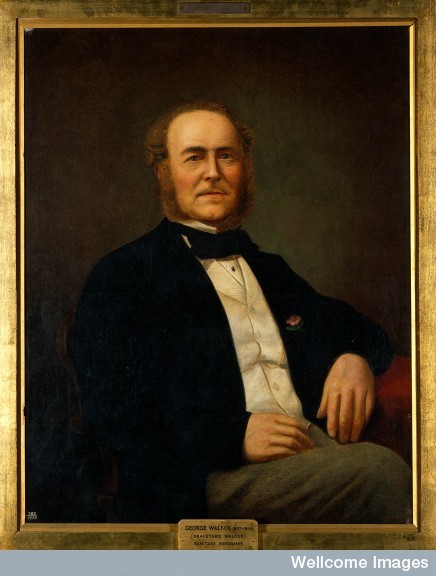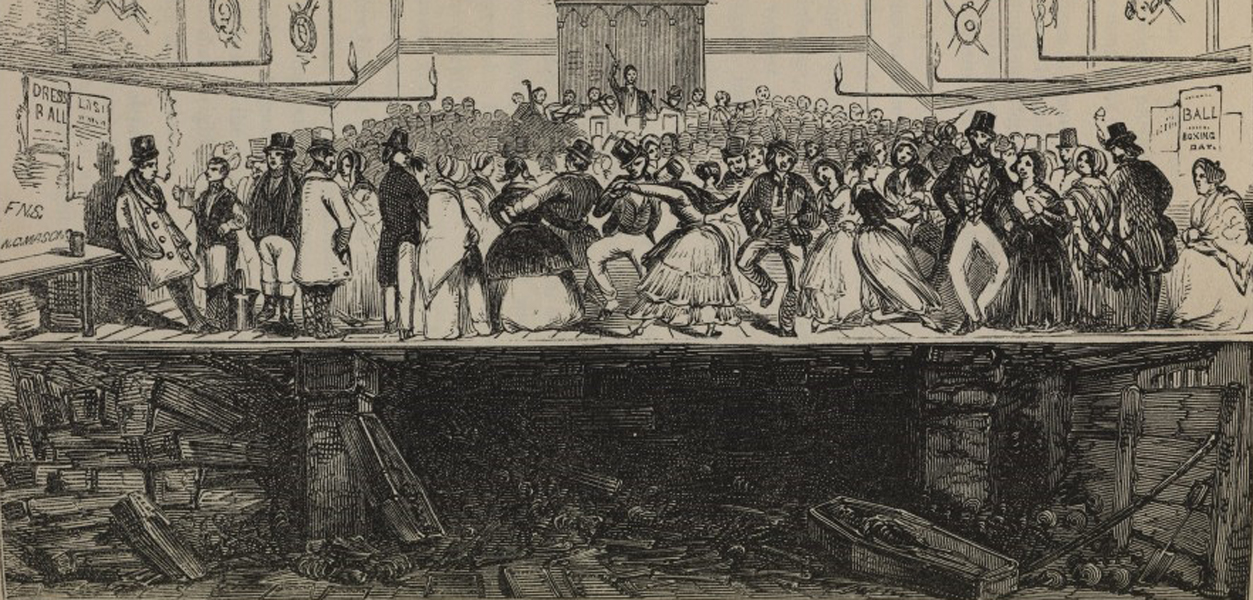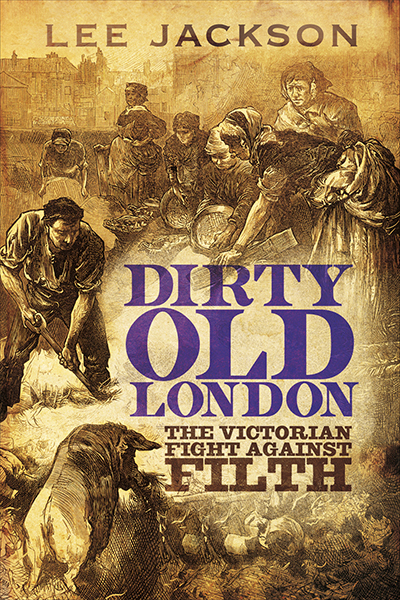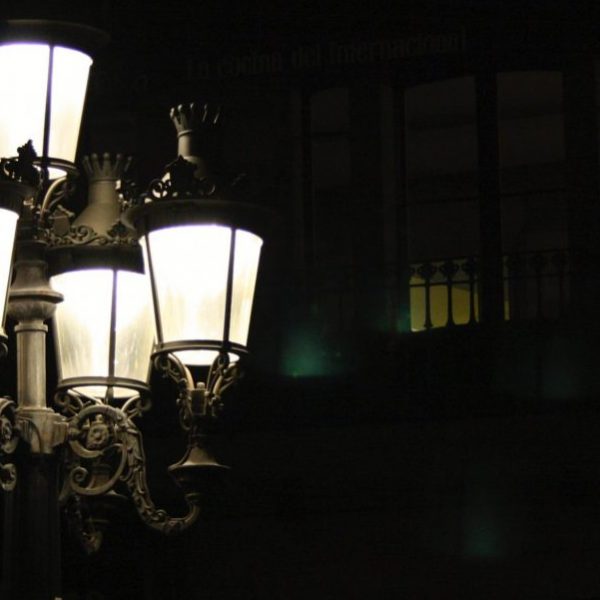Dancing on the Dead: George Walker and Dirty Old London
Lee Jackson, author of Dirty Old London: The Victorian Fight Against Filth, wrote a series of posts for the Yale University Press London Blog to explain how the inventors of ‘sanitary science’ nevertheless lived in what remained a notoriously filthy city. Some of these entries will be appearing here on the Yale Press log in preparation for the book’s publication on November 25. Start at the beginning of the London Blog’s series with “The Dustman” or check out the ~spooky~ Halloween post below on the graveyards of London. It combines the original entries “Graveyard Walker” and “Dancing on the Dead” for the occasion.
Lee Jackson—
The 1840s saw a growing concern about all things ‘sanitary,’ particularly the dangers of cesspools and sewage. There was, however, another deeply worrying type of refuse plaguing the metropolis—decaying human bodies.
The capital’s ancient churchyards and commercial burial grounds were full to the brim with corpses. Great new cemeteries were being built around the periphery of London by private companies—but their constituency was the wealthy middle- and upper-classes, who could afford their expensive plots. The poor, on the other hand, remained in the centre of the metropolis, where space was at a premium.
Conditions in the heart of London were increasingly dire. Coffins were stacked one atop the other in deep shafts, the topmost mere inches from the surface. Grounds were regularly ‘topped up’ with earth to hide the problem (hence many central London churchyards still remain several feet above pavement level). Putrefying bodies were frequently disinterred by gravediggers to make room for newcomers, leading to macabre scenes:
‘I saw them chopping the head of his coffin away: I should not have known it if I had not seen the head with the teeth … I knew it was my father’s head and I told them to stop and they laughed …’

Wellcome Images: Portrait of Walker
Space was not the only issue. The stench from poorly-managed grounds was revolting, and some considered this to be a species of dangerous ‘miasma’, analogous to the stink from cesspools and sewage, believed to be a serious risk to public health. George Walker, a doctor practising in the slum-ridden district around Drury Lane, resolved to bring the dangers of ‘graveyard gases’ to the notice of the government. He issued numerous pamphlets on the subject; he incited those living in close proximity to noxious churchyards to petition local authorities; and he joined forces with the MP William Mackinnon to lobby for a government inquiry.
Typical of Walker’s tactics was his intervention at Spa Fields, Islington—a private burial ground whose owner, Mr. Bird, was suspected of hasty disinterment of corpses to make room for new customers. Walker issued leaflets throughout Clerkenwell, condemning Bird’s practices and hinting that bodies were being burned in a makeshift crematorium. A former gravedigger, Reuben Room, testified to a variety of gruesome practices (‘I have had as much of 1.5cwt of human flesh on what we term the “beef board” …’); and, after much publicity, the Home Secretary himself was obliged to order a police investigation—all thanks to Walker’s determined agitation.
Another of Walker’s interventions involved Enon Chapel, a Baptist Meeting House, opened in the 1820s, in slums north of the Strand. The minister, who leased the building, presided over regular church services, but the chapel was essentially a ‘burial speculation,’ utilizing a capacious cellar for ‘vaults.’ The aim was to pack in as many bodies as possible. Fees were comparatively cheap: a complete funeral package cost between 8 and 15 shillings. The poor suddenly had a more affordable, convenient location to bury their dead. The entrepreneurial pastor, meanwhile, reaped a healthy profit.
During the 1830s, however, questions began to be asked. The small chapel’s vaults seemed remarkably capacious. Rumors abounded that coffins were being broken up and burnt for firewood; that rotting corpses were being flushed down the sewer that ran underneath the building; that building works had enabled the owner to remove wagons full of human remains, topped only with a light covering of earth–anything to make more room. The chapel above, meanwhile, became filled with ‘body bugs’ which nested in the hair and clothing of the living. Worshippers reported foul aromas and a ‘peculiar taste’ during services.
The repulsive details, hinting a dark goings-on in the cellar, would be repeatedly publicized by George Walker. By 1842, the chapel had closed; and a temperance society leased the hall for public lectures and fund-raising dances. Walker railed against the impiety and miasmatic dangers of ‘quadrilles, waltzes, country-dances, gallopades, reels … danced over the masses of mortality in the cellar beneath.’ In 1847, he took the lease himself, promising to remove the corpses in the cellar to a decent cemetery. This might have been a quiet, decorous affair, a generous charitable intervention. Instead, Walker stage-managed a remarkable stunt. The public were invited to come and view the infamous ‘Golgotha’ beneath the dance-hall, an object lesson in the perils of urban burial.

There was something of the fairground sideshow about this supposedly educational experience. A man was placed at the chapel gate, ‘who walked about with skulls in his hand, apparently with the view of increasing the excitement of the persons assembled outside.’ Once inside, the public were treated to various revelations, including visiting the neighboring out-house, where bodies, allegedly, had once been quietly removed from the vaults for the purpose of sale and dissection. Most bizarrely of all, the original proprietor, who had offered so many dubious cheap burials, was the highlight of the tour: ten years deceased, ‘a stark and stiff and shrivelled corpse’ resembling an Egyptian mummy, propped up for public inspection, recognizable by his ‘screw foot.’
The parish churchwardens, whilst conceding Dr. Walker’s eminent respectability, complained about the propriety of the undertaking, and the size of the mobs that gathered for a viewing. Walker countered that the only money taken—at the end of the visit—was at the discretion of the individual. Any cash would, he claimed, contribute towards a fund for removal of the bodies. After the exhibition had run for several months, Walker would pay £100 of his own money—there is no record whether or not it came from the show’s takings—to transfer the remains for burial in Norwood Cemetery.
In the end, the government settled on an ill-advised plan for nationalizing London’s cemeteries, devised by the civil servant Edwin Chadwick. When this failed, new legislation was passed in 1852 which simply allowed the Home Secretary to close mismanaged grounds, and parishes to borrow money to create spacious, affordable garden cemeteries in the suburbs—still very much in use to this day. George Walker, having spent a decade campaigning for burial reform, retired to North Wales. He was remembered in Drury Lane as ‘a great favourite … on account of his kindness to the poor.’
A well-known Victorianist, Lee Jackson is the author of Walking Dickens’ London and A Dictionary of Victorian London, and is the creator of the preeminent website on Victorian London (www.victorianlondon.org). He lives in London.
Further Reading



























